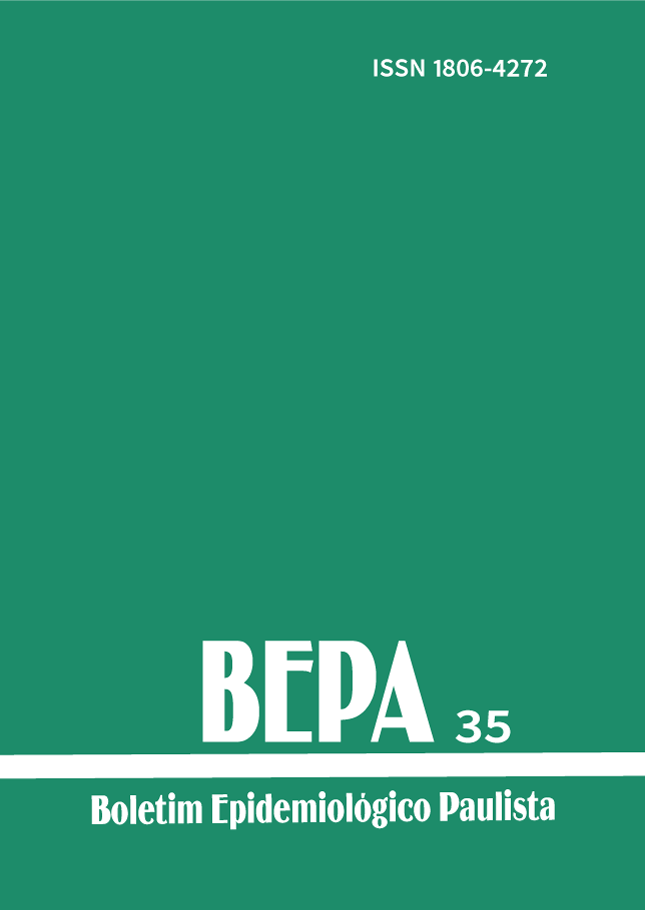Resumo
Em 2005, a vigilância acarológica no município de Ribeirão Pires, na Grande São Paulo, foi intensificada em razão das inúmeras solicitações da população, que se mostrava bastante preocupada com o aumento do número de carrapatos e com o risco de desenvolver a febre maculosa. As investigações acarológicas realizadas pelo Centro de Controle de Zoonoses municipal abrangeram áreas infestadas pelos vetores da doença, Amblyomma cajennense e Ambyomma aureolatum, e áreas com registros de casos humanos suspeitos de febre maculosa. Observou-se que as maiores infestações nos domicílios estavam associadas à presença de hospedeiros primários, equinos e cães, e que as duas espécies de carrapatos do gênero Amblyomma ocorrem praticamente na mesma proporção. A melhor medida de proteção para a doença é evitar a exposição do homem ao carrapato transmissor, em áreas de mata e outros locais possivelmente infestados. A manutenção de animais domésticos, domiciliados e periodicamente tratados com carrapaticidas, é importante para o controle da infestação. A informação e conscientização da população sobre a doença e sua gravidade são fundamentais, pois o sucesso das ações de prevenção e controle somente será alcançado pela parceria da comunidade e órgãos públicos.
Referências
Brasil. Agência Fiocruz de Notícias. Especialista responde perguntas mais comuns sobre a febre maculosa. [Boletim on-line]. Disponível em: http://www.fiocruz.br/ccs/entrevistas/elba_lemos.sp.htm [ 2005 nov 17].
São Paulo. Secretaria de Estado da Saúde de São Paulo. Varicela, difteria, febre maculosa brasileira: aspectos epidemiológicos do Estado de São Paulo. Rev. Saúde Pública, 2003; v 37 nº 06.
Del Guersio VMF, Rocha MMM, Melles HHB, Lima VCL, Pignatti MG. Febre maculosa no município de Pedreira, SP, Brasil. Inquérito sorológico. Rev. Sociedade Brasileira de Medicina Tropical, 1997, 30:47-52.
Brasil. Agência Fiocruz de Notícias. Febre maculosa: especialistas da Fiocruz explicam em coletiva os principais aspectos da doença [Boletim on-line]. Disponível em: http://www.fiocruz.br/ccs/novidades/out05/ maculosa_ferp.htm [2005 nov 17]
Brasil. Universidade Federal de Ouro Preto. Febre maculosa. Revista da Pesquisa & Pósgraduação, (2005 mai 10)
São Paulo. Secretaria de Estado da Saúde de São Paulo. Centro de Vigilância Epidemiológica (CVE). Informe Técnico II;, dezembro 2004.
Góes EM. Febre maculosa: 42 casos suspeitos. Diário do Grande ABC, 10 de novembro de 2005; caderno Sete Cidades.
Góes EM. CCZ agilizará identificação de carrapatos. Mais Notícias, Ribeirão Pires, p.04, 5 novembro 2005.
Labruna MB, Leite RC, Gobesso AAO, Gennari SM, Kasai N. Controle estratégico do carrapato Amblyomma cajennense em equinos. Ciência Rural, 2004, 34:195-200.
Santos AP. Aspectos epidemiológicos da febre maculosa em uma área endêmica do município de Mogi das Cruzes (SP) e estudo em laboratório do ciclo de vida do vetor Amblyomma aureolatum (Acari: Ixodidae) [Dissertação]. São Paulo: Universidade de São Paulo; 2003. Resumo.
Barros-Battesti DM, Arzua M, Bechara GH. Carrapatos de importância médico-veterinária da região neotropical um guia ilustrado para identificação de espécies. Primeira edição. São Paulo: Butantan, 2006.
São Paulo. Secretaria de Estado da Saúde. Superintendência de Controle de Endemias (Sucen). Febre maculosa – Informações para profissionais de saúde; 2000-2001.

Este trabalho está licenciado sob uma licença Creative Commons Attribution 4.0 International License.
Copyright (c) 2006 Eliana Maciel de Góes, Cirlei Aparecida Zanon Mendes Gonçalves, Nelson Roberto Tognollo, Márcia Flóes de Magalhães, Patrícia Bezerra da Silva
